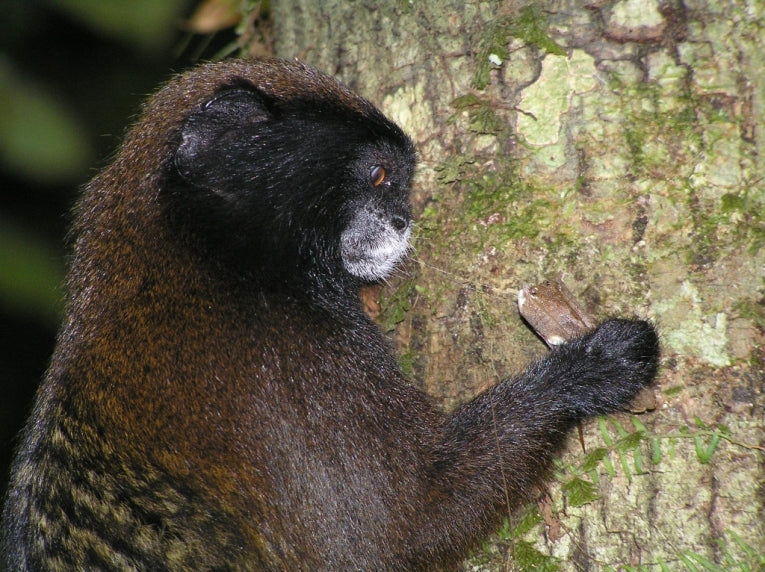A project involving the universities of Cambridge, Stirling, Sussex and Anglia Ruskin, led by Dr Andrew Smith has reversed the opinions we tend to hold on colour vision. Reporting in the journal, Animal Behaviour, they studied three tamarin monkeys. The saddle-back, moustached and red-bellied tamarins inhabit the Amazon rainforest and Belfast Zoo.
Humans are normally trichromatic. That is because we have three detectors or types of cone cell in our retina. Our dichromatic fathers and sons see better in dim light according to some research, because of some improved spatial vision and are thought superior at breaking a camouflage pattern. They are usually red-green colour-blind or green colour-blind and all primates seem to be similar in this respect. That indicates that predator and prey recognition could be advantaged by dichromatic vision, even among humans. The evolution of our colour-blind humans is likely to be related to their success at this recognition. The genes would be favoured simply by natural selection.
Primates eat ripe fruit that becomes a red or orange target in a fruit tree. As red-green colour blindness prevents this distinction, humans may be less successful at targeting ripe fruit, as we have a higher incidence of this colour blindness than other apes. In the Americas, the monkeys have evolved separately and for example, in many species, all males and some females are colour-blind.
Scientists test the DNA by gathering faeces from the forest floor, so the investigation is not hindered by lack of specimens. Strangely, these tamarins have six different types of vision. Six different ways of viewing your environment could have some advantage for a troop of monkeys. Less inter-group competition, specialisation of the tasks of fruit collection or prey detection and several other predator-related indicators could make group size and group protection relevant to colour vision.

Saddle-back tamarin feeding on a green cricket; Credit Mojca Stojan-Dolar
In this study the colour blind individuals captured insects such as crickets at a much higher rate than their trichromatic colleagues, but the trichromatic individuals caught more overall prey. Heterozygote advantage may help maintain the genetic polymorphism of the colour vision of many organisms.
Looking at the environment of these primates, different seasons can produce varying numbers of insect prey, such as newly emerged adults. When the crickets are in season, its full bellies for the dichromats, but also their young. Monkeys share food more than other animals, so it is fair to suggest that they, the apes and ourselves have been profoundly influenced by this genetic diversity in colour vision










